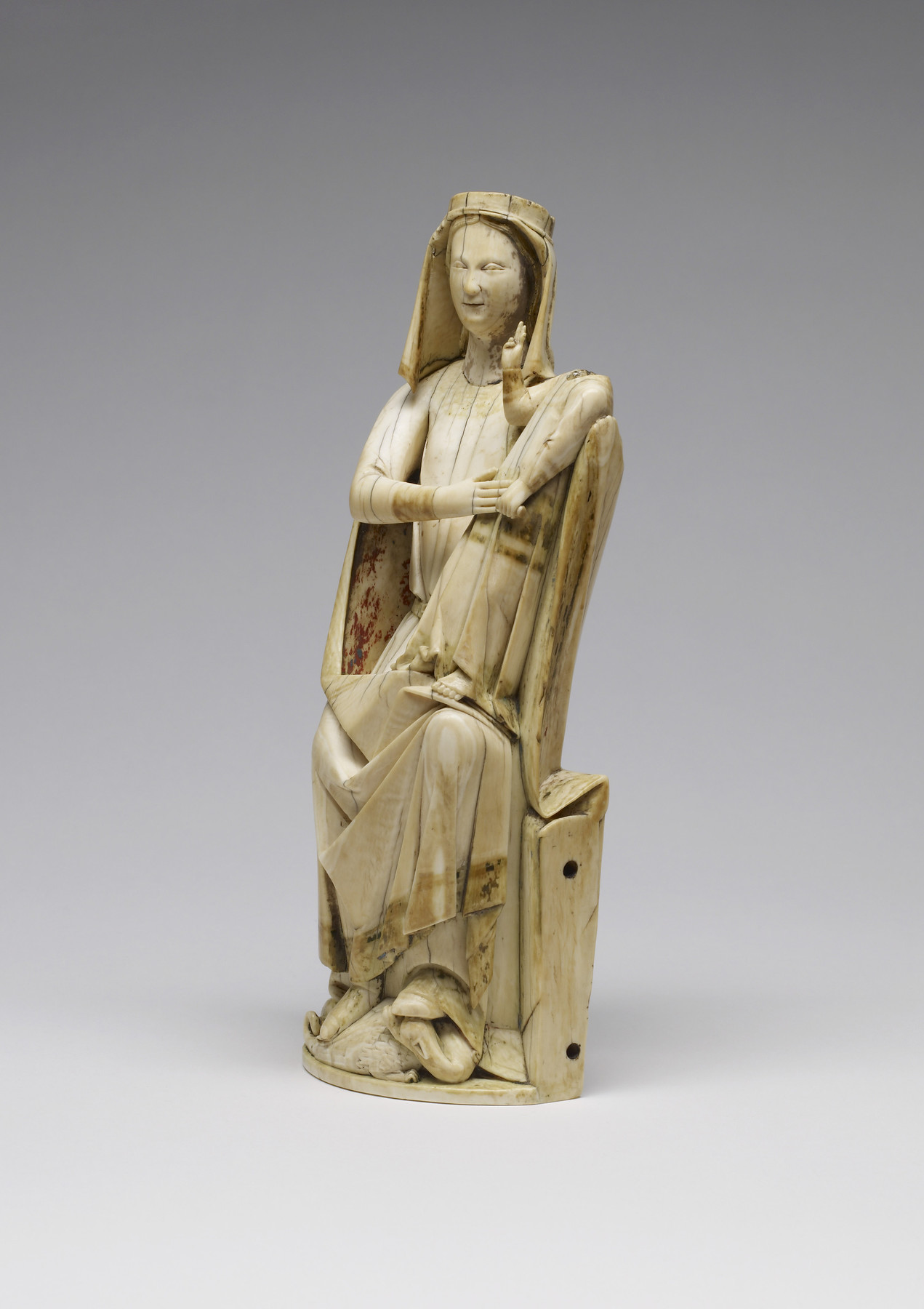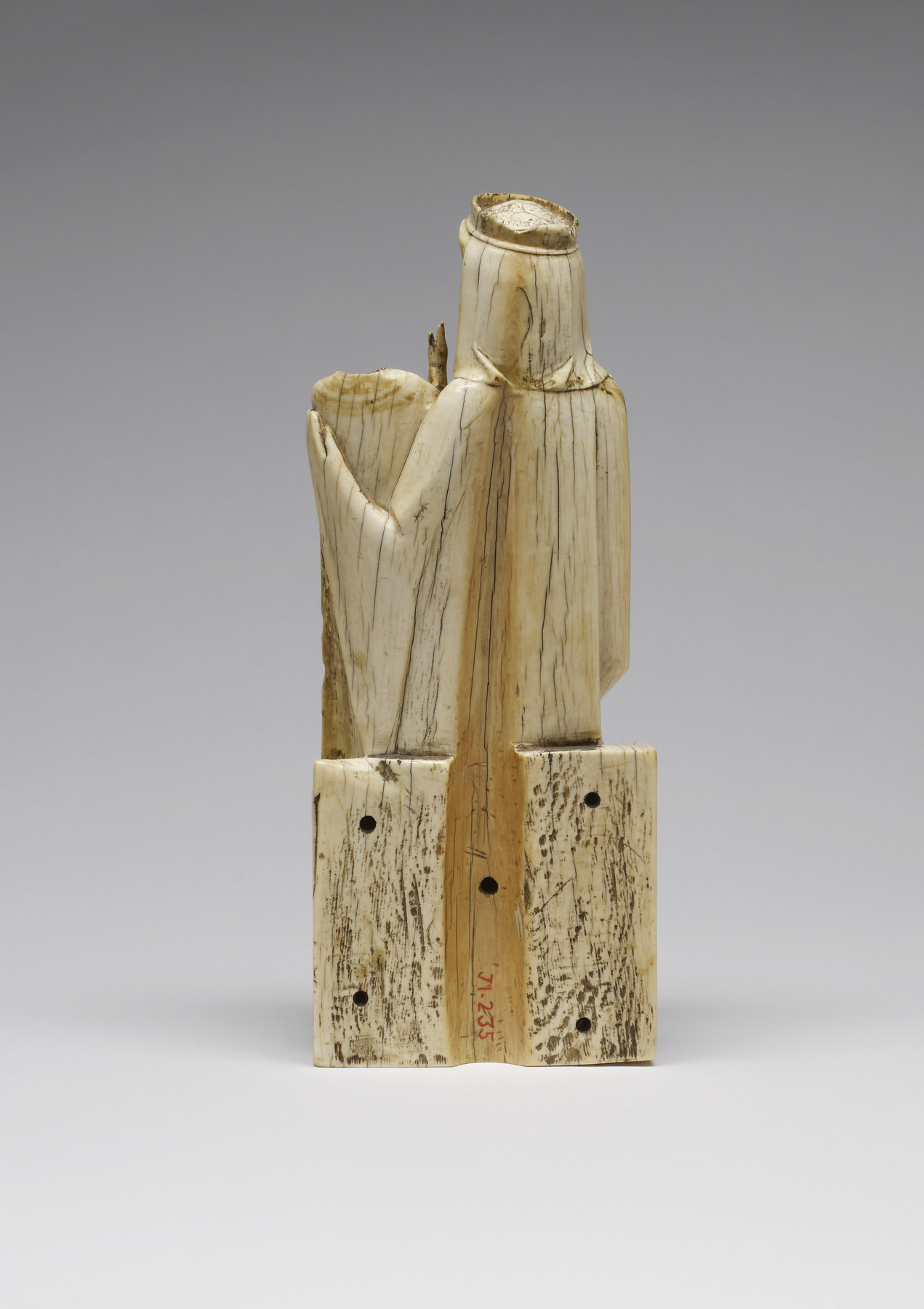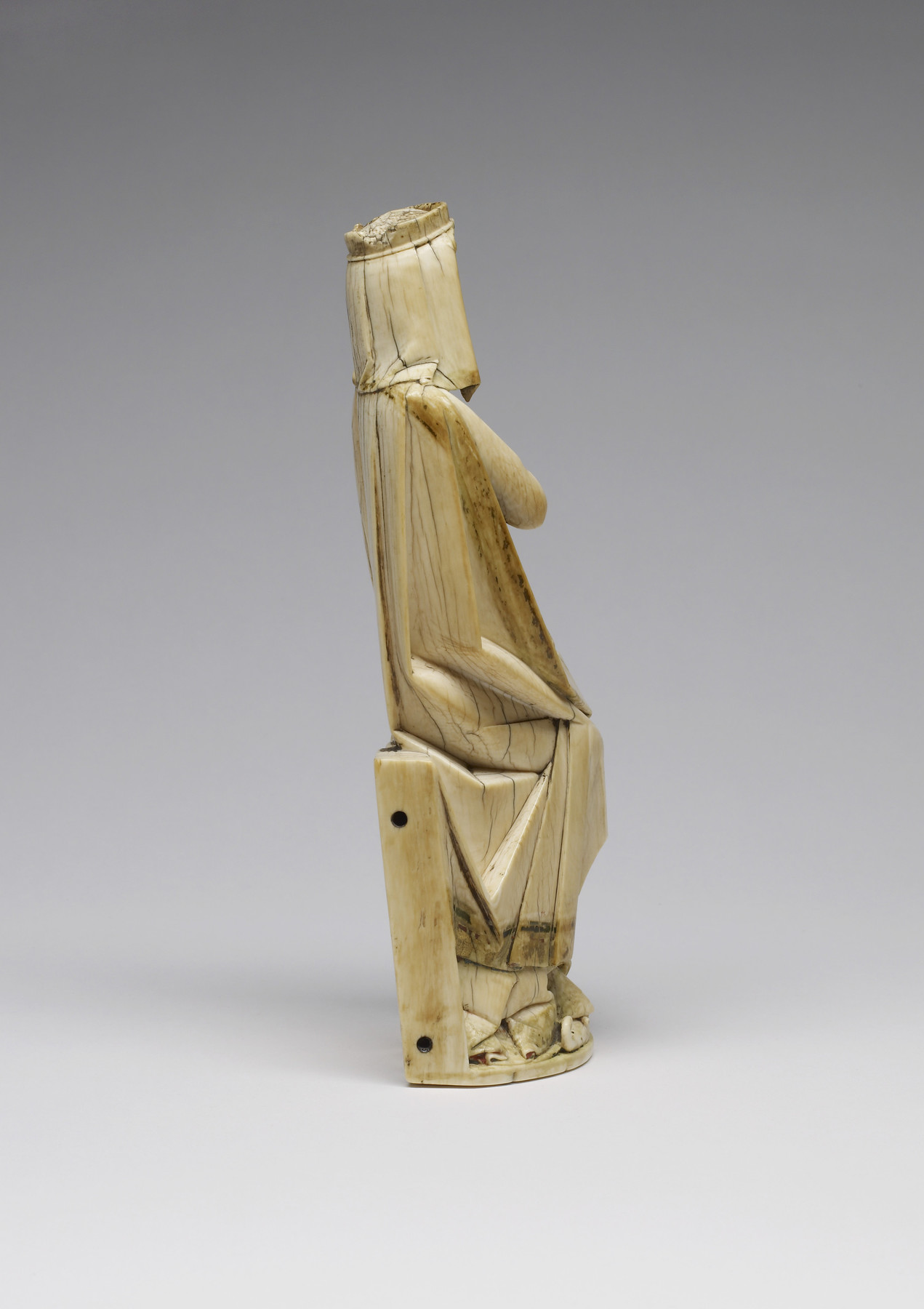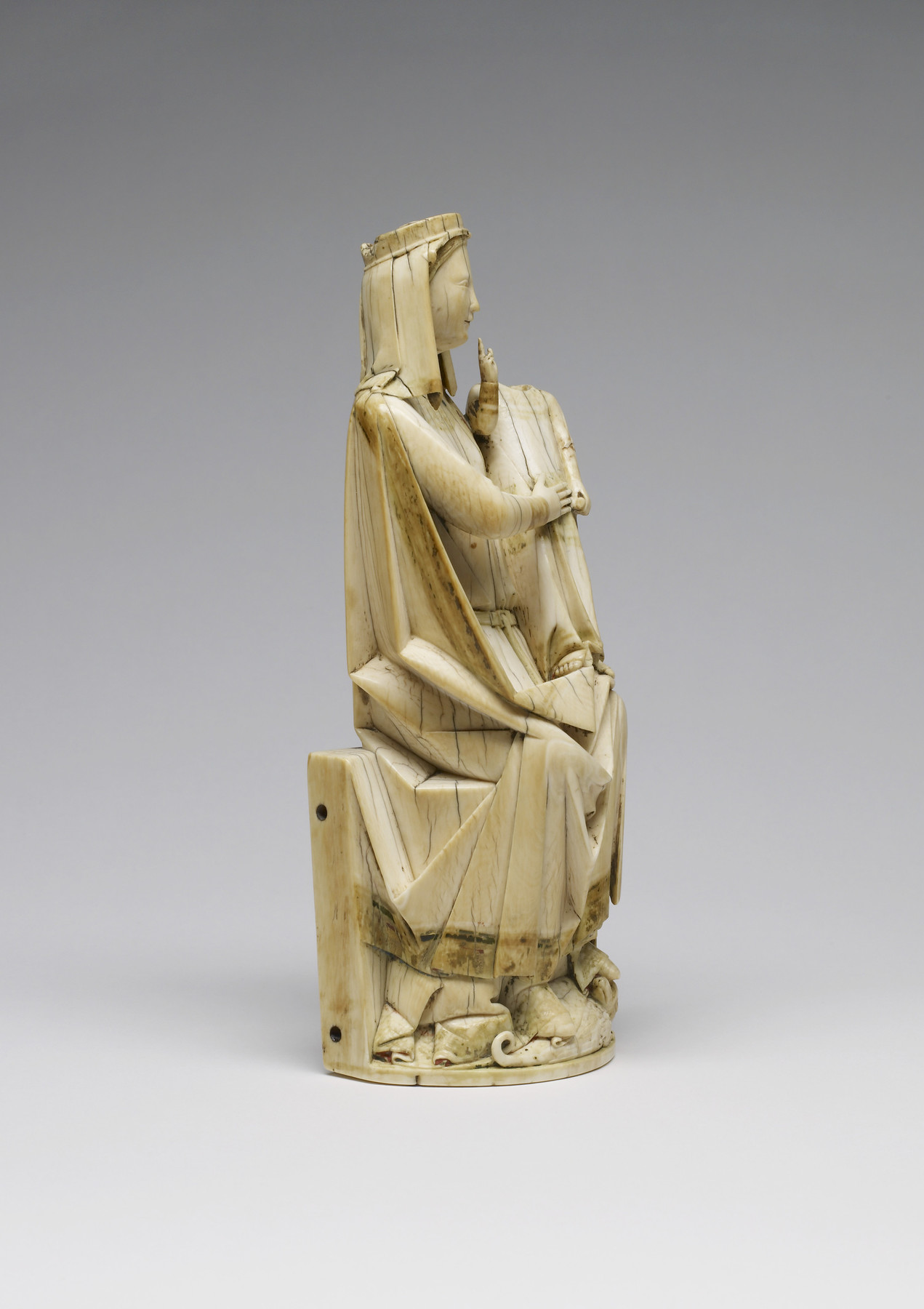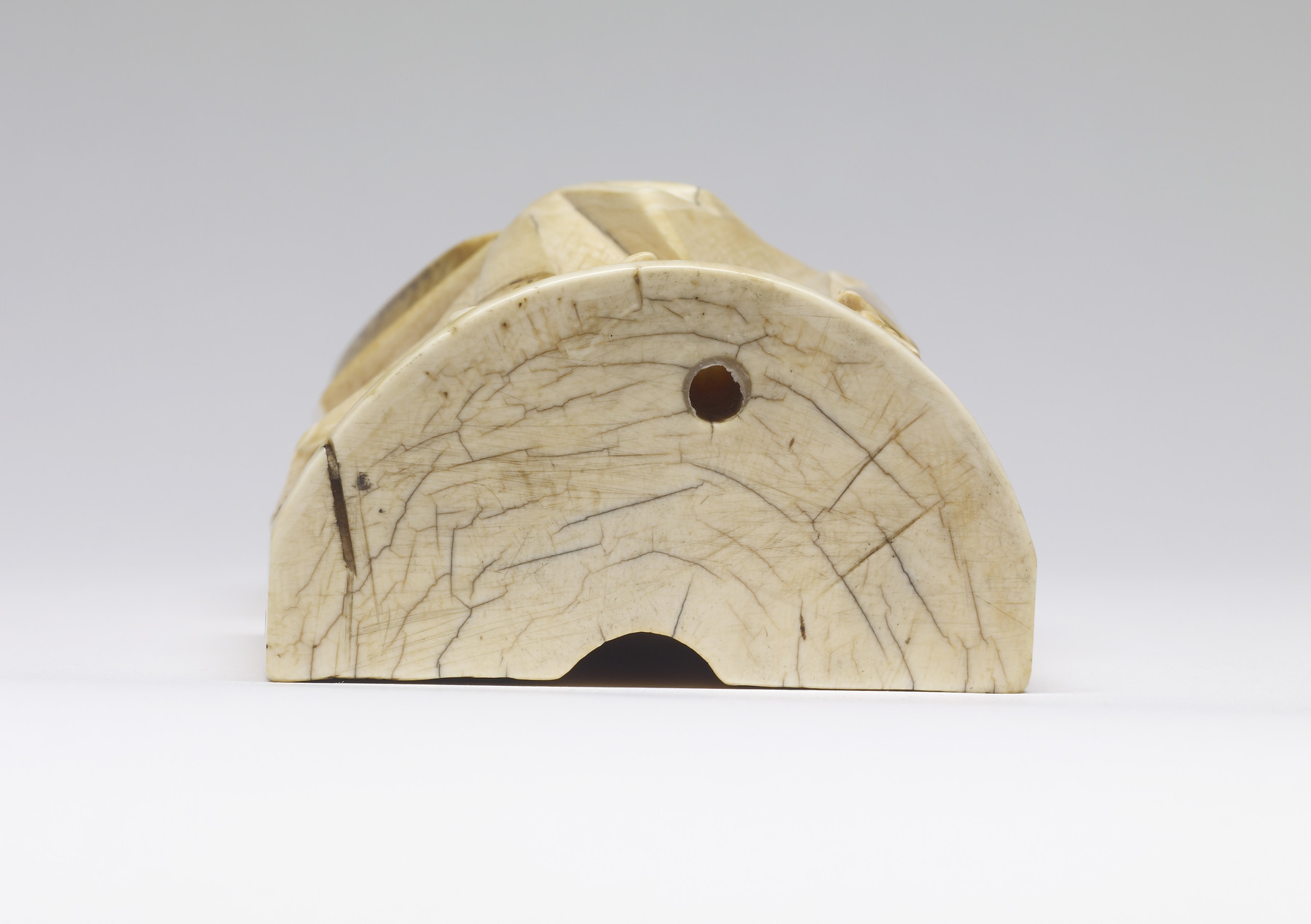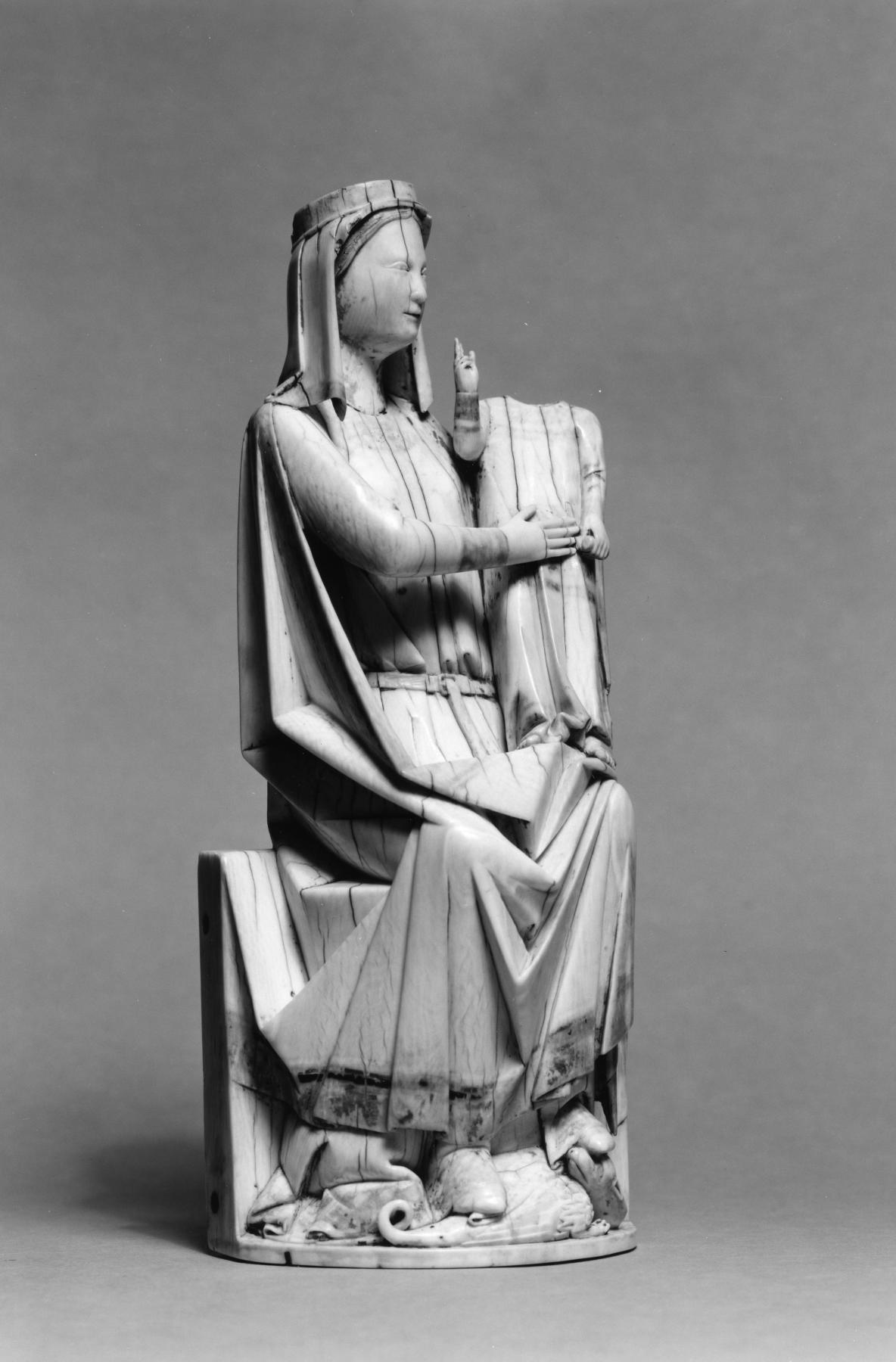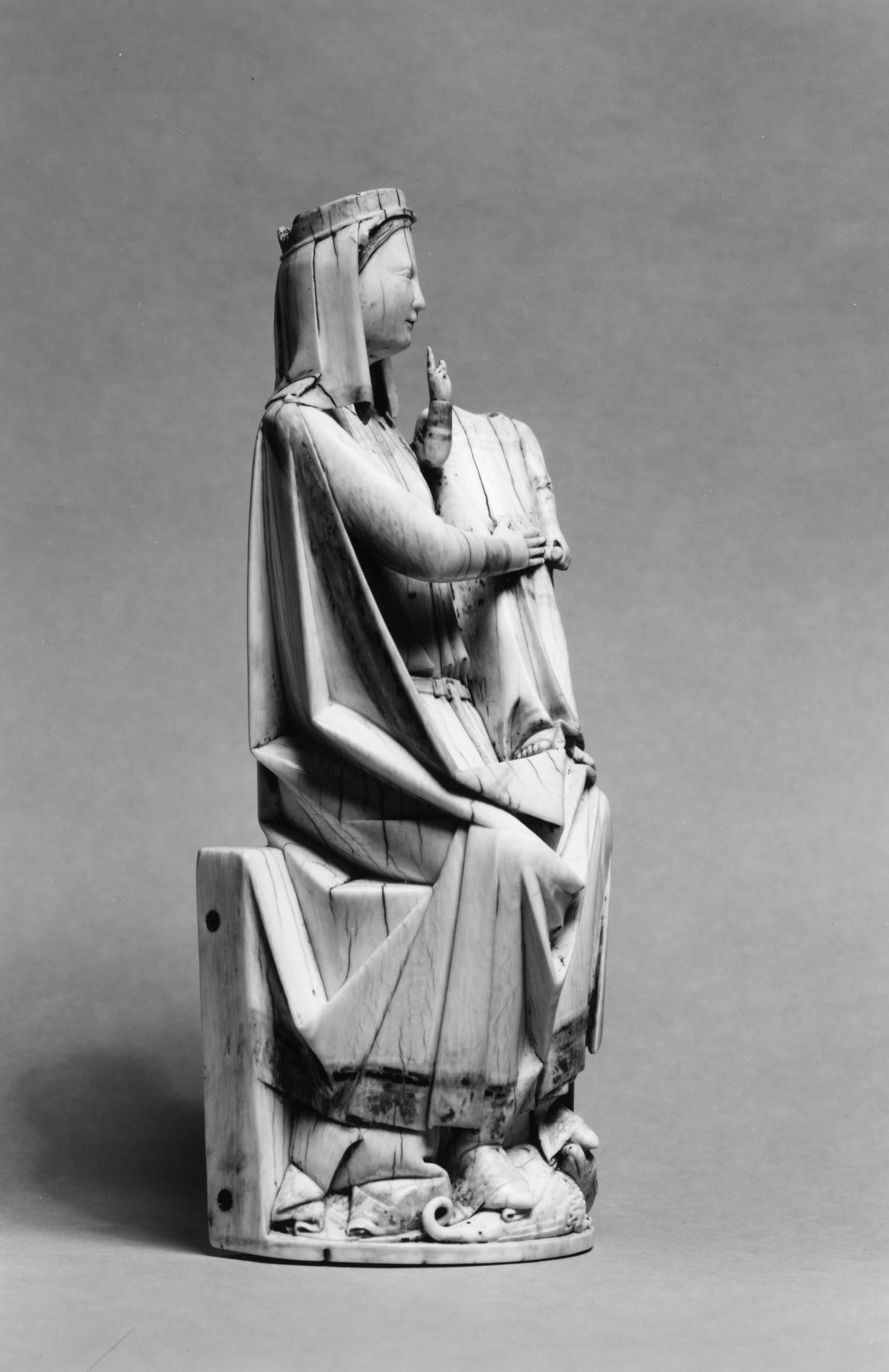Virgin and Child
(Medieval Europe )
This crisply carved devotional statue was once completed by a throne and a gold crown for the Virgin. She rests her feet on a small dragon, symbolizing conquered evil, while the Christ Child raises his right hand in a gesture of blessing.
Provenance
Provenance (from the French provenir, 'to come from/forth') is the chronology of the ownership, custody, or location of a historical object. Learn more about provenance at the Walters.
Henri Daguerre, Paris; Hector Economos, Paris, before 1913; Jacques Seligmann, Paris; Henry Walters, Baltimore, 1922, by purchase; Walters Art Museum, 1931, by bequest.
Exhibitions
| 2019-2022 | Caravans of Gold, Fragments in Time: Art, Culture, and Medieval Trans-Saharan Exchange. Mary and Leigh Block Museum of Art, Northwestern University, Evanston; Aga Khan Museum, Toronto; National Museum of African Art, Smithsonian Institution, Washington. |
Conservation
| Date | Description | Narrative |
|---|---|---|
| 3/27/1990 | Examination | examined for condition |
| 6/3/1999 | Technical Report | examined for technical study |
| 6/7/1999 | Treatment | other |
| 7/30/2019 | Treatment | cleaned |
| 7/30/2019 | Treatment | Small accretion of modern material removed mechanically |
Geographies
France
(Place of Origin)
France, Paris (Place of Origin)
Measurements
H: 8 7/8 x W: 3 1/2 x D: 2 1/2 in. (22.6 x 9 x 6.3 cm)
Credit Line
Acquired by Henry Walters, 1922
Location in Museum
Not on view
Accession Number
In libraries, galleries, museums, and archives, an accession number is a unique identifier assigned to each object in the collection.
In libraries, galleries, museums, and archives, an accession number is a unique identifier assigned to each object in the collection.
71.235


